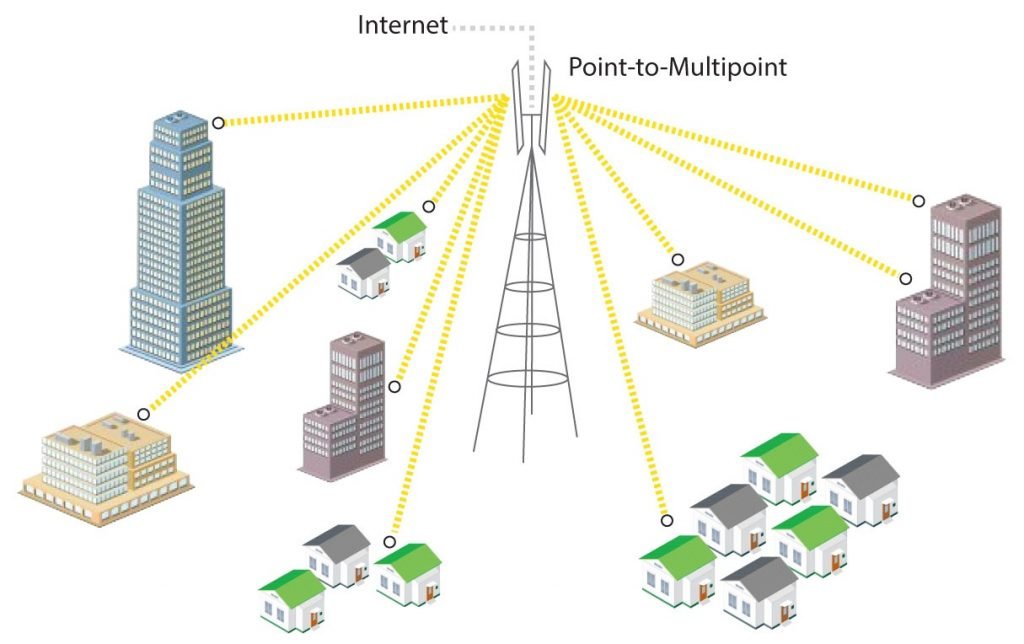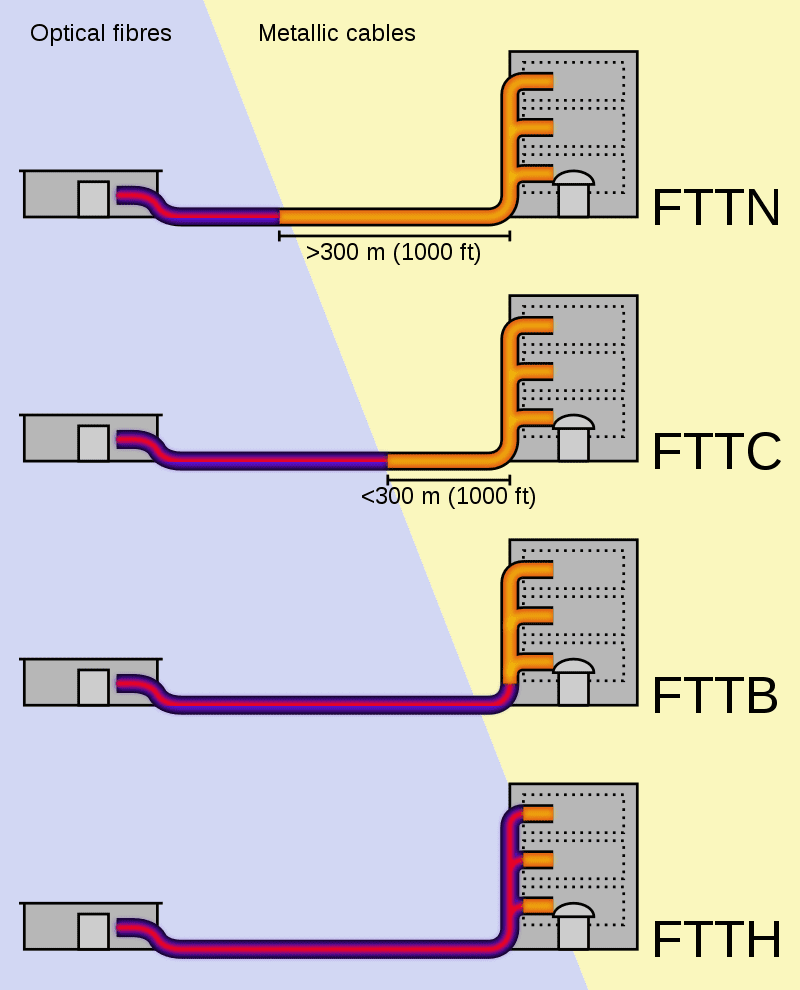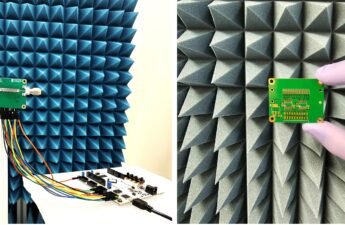Currently, communication by the internet is made by optical fiber networks. In this post, are shown network architectures and latency.
Click in the following button, in case you don’t know the operation and advantages of optical fibers.
Operation of optical fibersClick here
Passive optical network (PON)
The PON is a point-to-multipoint, by that, connect many points from a central.

The means of transmission don’t need by supplied by an energy source. The signal is transmitted by an optical line terminal (OLT), through a cable. It passes through passive splitters. The optical network unit (ONU) converts signals from the optical fiber in electric signals, which are distributed to customers. Also can send data from customers to OLT.

Examples of OLT and ONU respectively.


Exist many PON technologies and in the future will be published a post about the subject.
Network architecture
Optical fiber architecture has the generic name FTTx. The main difference between networks is the length of metallic cables used in connection between central with OLT and consumer.

FTTN
It is the abbreviation of Fiber to the Node, optical fiber goes until a network box called node. Coaxial or twisted pair copper cables for digital telephone connection finish the rest of the way to end-user.
FTTC
Fiber to the Curb, the difference from FTTN is the length of metallic cable, which must not exceed 300 meters. The cable can be coaxial or twisted pair.
FTTB
Abbreviation of Fiber to the building. As the name says, fiber goes to a building’s entrance or basement. The final connection to users is made by copper wires or wireless.
FTTH
The optical fiber goes directly to the user’s home. That’s why it’s called Fiber to the home.
Other names
Exist other names FTTx, where the last letter refers to fiber’s final point. For example, FTTA (Fiber to the antenna) or FTTDp (Fiber to the distribution point).
Optical fiber latency
Latency is a delay in transmission. Depends on fiber’s length L, core’s refraction index n and light’s wavelength. Latency t in optical fiber’s core is calculated with the following equation, c is the speed of light in vacuum.
t=\frac{L}{c}\cdot n
The material’s refraction index changes according to the wavelength of light pulses. On the internet, exist many programs that calculate the latency of optical fiber.





The first part is about data center.
https://www.electricalelibrary.com/en/2019/07/01/how-internet-works-part-1-data-center/